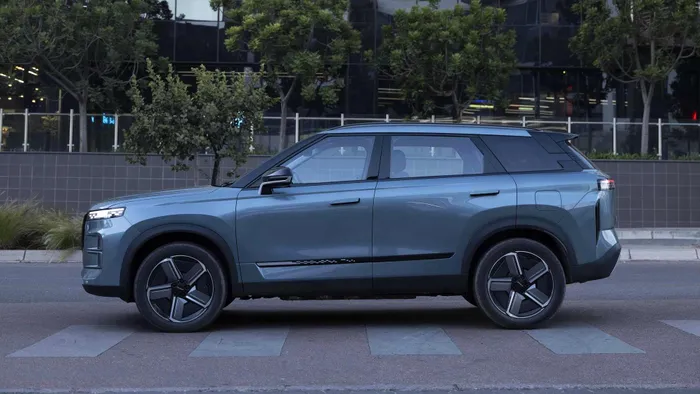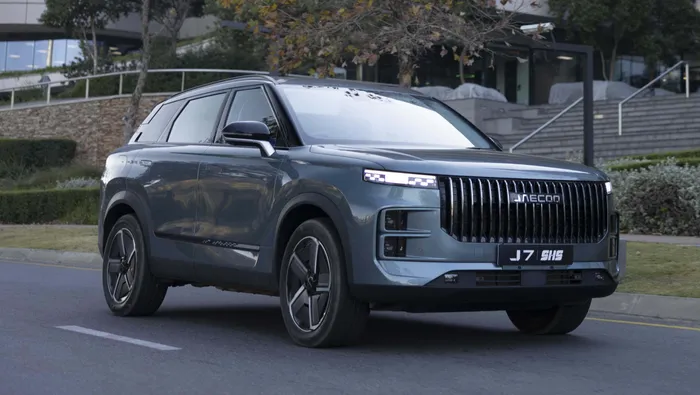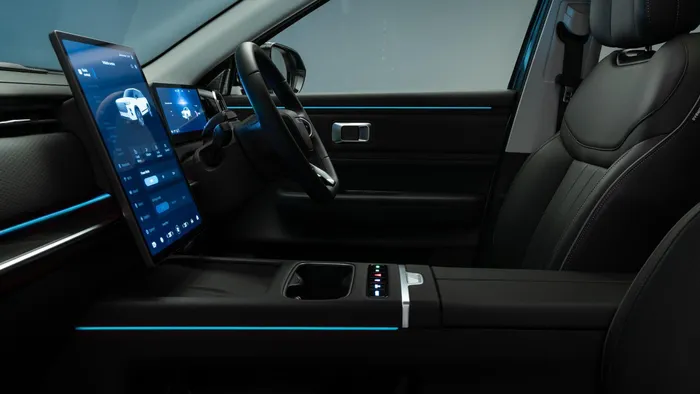REVIEW: Jaecoo J7 SHS plug-in hybrid impresses with its advanced tech and refinement

The Jaecoo J7 SHS, at R689,900, costs just R10,000 more than the range-topping ICE version.
Image: Supplied
Call it a ‘poor man’s Range Rover’ if you want, but I reckon the Jaecoo J7 is easily the best-looking Chinese SUV on the market right now.
Those smooth, elegant contours and blocky stance combine to give it a classy presence on the road, but enough of the subjective stuff: the Chery-owned brand has just given you another reason to consider its midsize SUV.
The new Jaecoo J7 SHS comes in as one of the country’s most affordable plug-in hybrid models. At R689,900, it’s undercut by only the R599,900 Chery Tiggo 7 CSH and BYD Sealion 6, which starts at R639,900 in base form.
How the Jaecoo J7 SHS hybrid system works
The J7 plug-in hybrid is powered by Chery’s advanced new ‘Super Hybrid System’ (SHS). As a series-parallel hybrid, it combines the best of both worlds.
This is because it can operate both as a parallel hybrid, in which both the petrol and electric motors power the vehicle at the same time for maximum performance, or as a series hybrid, wherein the petrol engine acts as a generator to charge the battery when it’s running low.

The J7 SHS can operate in series and parallel hybrid modes.
Image: Supplied
And this is what makes it more economical than a traditional PHEV, which can get thirsty after the battery is depleted. This is because in series hybrid mode, the petrol engine is operating in a more efficient range as it powers the battery, rather than directly driving the wheels, which the 150kW e-motor does with ease all on its own. Power is sent to the front wheels through a Dedicated Hybrid Transmission (DHT).
Slam the right pedal, however, and both motors will power the wheels simultaneously, delivering combined outputs of 255kW and 525Nm. This results in somewhat spirited performance, with 0-100km/h coming up in a claimed 8.5 seconds, but because this vehicle is front-wheel drive, there is a bit of unwelcome torque steer.
What's it like to drive?
This J7 SHS is more of a comfortable-but-brisk cruiser than an outright performance vehicle, and I was impressed by its smoothness and quietness of its operation. The petrol engine was quiet and unobtrusive when called into action in series hybrid mode, and the driving experience was akin to a fully-electric vehicle.
Thanks to its 18.3 kWh Lithium Iron Phosphate (LFP) battery, the J7 SHS can technically operate as a full EV if you plug it in regularly, with Jaecoo claiming an all-electric range of up to 90km and a combined range of over 1,200km, albeit under ideal conditions.
Our vehicle automatically kicked into HEV mode when there was 20km of EV range remaining, and I decided to keep it uncharged to gauge how economical it would be as a regular hybrid. In a mixture of driving conditions, the Jaecoo sipped a very reasonable 6.6 litres per 100km.
On-road refinement is impressive, as we’ve touched on, and the ride is acceptably comfortable on most roads, however it felt a little too firm for my liking over harsher surfaces. Another downside, in my book, was the artificial and unresponsive steering feel, but this shouldn’t be a deal breaker for most buyers.
Interior, features and practicality
The interior takes a leaf out of Tesla’s book, with almost all functions being operated via a huge 14.8-inch ‘floating’ central touchscreen, which incorporates wireless Android Auto and Apple CarPlay connectivity as well as built-in satnav. Most features can also be controlled via voice control.
Thankfully, accessing the climate controls on the screen isn’t too much of a pain as there is a permanent short cut at the bottom of the screen layout.

Hope you like things digital!
Image: Supplied
Other features include a panoramic sunroof, eight-speaker Sony sound system, 50-watt wireless charger, 540-degree surround view camera, and a full suite of 16 driver assist features, including Adaptive Cruise Control, Auto Emergency Braking with Vehicle, Pedestrian and Bicycle Recognition, Forward Collision Warning, Blind Spot Detection and Rear Cross-Traffic Alert.
The J7 SHS costs just R10,000 more than the range-topping Inferno petrol model and besides losing the all-wheel drive system, the hybrid only misses out on the most extravagant of features versus its sibling. Assuming you can live without a heated steering wheel and rear privacy glass.
When it comes to rear legroom, the 4.5-metre-long J7 is average at best. Jumping into the back, I didn’t feel cramped, but there wasn’t much stretching space either.
The boot is somewhat shallow, thanks to all the hybrid hardware, and this also means there is no spare wheel - which is worrying in the South African context.
As for after-sales back-up, the J7 SHS is sold with a five-year or 75,000km service plan and seven-year or 200,000km warranty with the electric drive unit components covered for 10 years or 200,000km.
The first owner also benefits from a 10-year or million-kilometre engine warranty and a 10-year, unlimited-kilometre battery pack warranty.
VERDICT
The Jaecoo J7 SHS is an impressive package.
While many of the Chinese products powered by regular internal combustion engines have been criticised for lacking drivetrain refinement, the Jaecoo J7 1.6T included, hybrid models such as the Jaecoo SHS are taking things to the next level, while still offering compelling value.
There are a few niggles, like an overly digitised cabin, a shallow boot, and no spare wheel.
But in the greater scheme of things, it shows that the 'legacy' car manufacturers have a good reason to be concerned.
IOL Motoring
Related Topics: